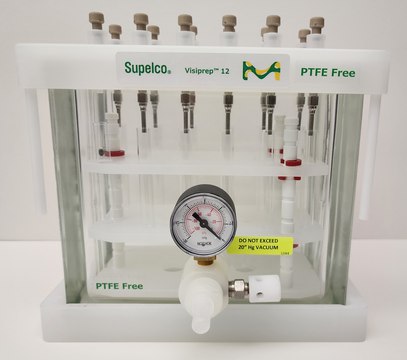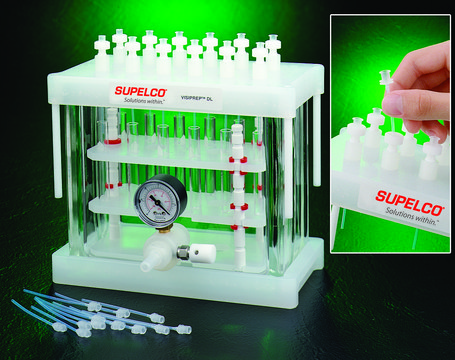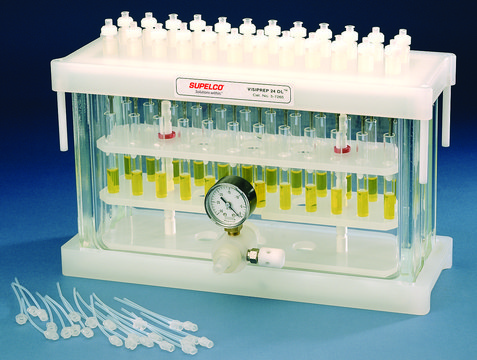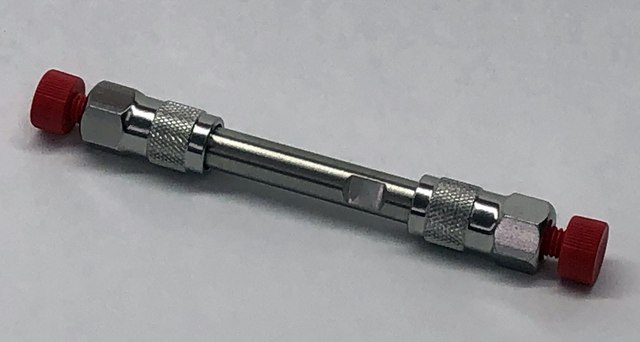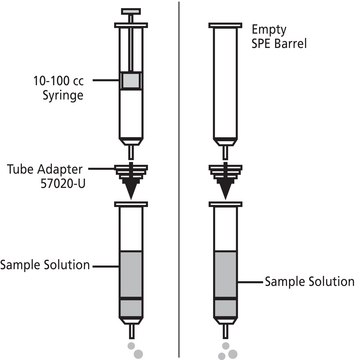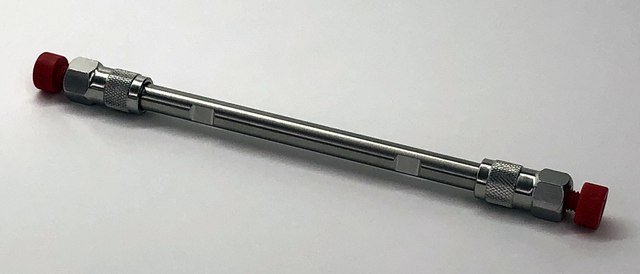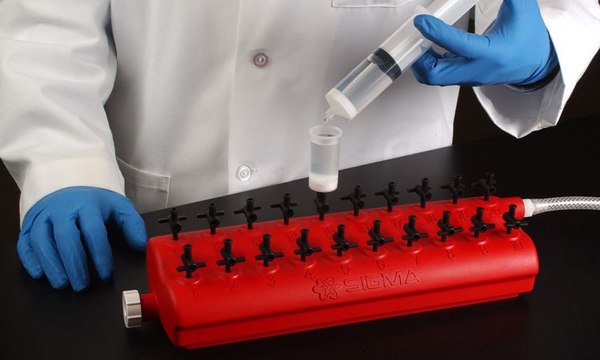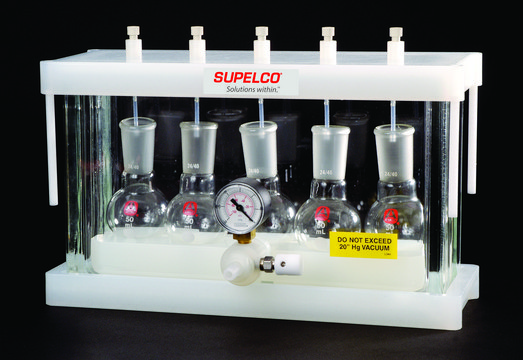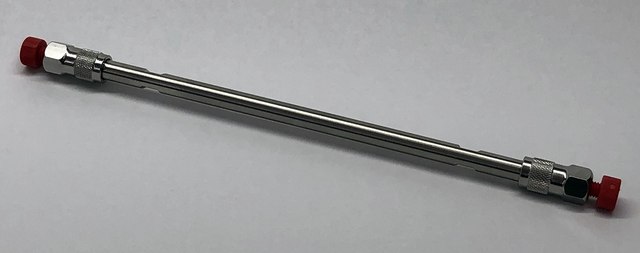QBD10314
MAL-dPEG®24-NHS ester
Synonyme(s) :
Polyethylene glycol
About This Item
Produits recommandés
Essai
>90%
Forme
solid or viscous liquid
Pertinence de la réaction
reactivity: thiol reactive
reagent type: cross-linking reagent
reactivity: amine reactive
Architecture des polymères
shape: linear
functionality: heterobifunctional
Conditions d'expédition
ambient
Température de stockage
−20°C
Chaîne SMILES
O=C(NCCOCCOCCOCCOCCOCCOCCOCCOCCOCCOCCOCCOCCOCCOCCOCCOCCOCCOCCOCCOCCOCCOCCOCCOCCC(ON1C(CCC1=O)=O)=O)CCN2C(C=CC2=O)=O
InChI
1S/C62H111N3O31/c66-57(5-8-64-58(67)1-2-59(64)68)63-7-10-73-12-14-75-16-18-77-20-22-79-24-26-81-28-30-83-32-34-85-36-38-87-40-42-89-44-46-91-48-50-93-52-54-95-56-55-94-53-51-92-49-47-90-45-43-88-41-39-86-37-35-84-33-31-82-29-27-80-25-23-78-21-19-76-17-15-
Clé InChI
GRDUWUCYIIEBIS-UHFFFAOYSA-N
Catégories apparentées
1 of 4
Cet article | 53557-U | 53559-U | 53560-U |
|---|---|---|---|
| particle size 2.7 μm | particle size 2.7 μm | particle size 2.7 μm | particle size 2.7 μm |
| separation technique reversed phase | separation technique reversed phase | separation technique reversed phase | separation technique reversed phase |
| matrix active group C18, extensively endcapped octadecylsilane (ODS) bonding phase | matrix active group C18, extensively endcapped octadecylsilane (ODS) bonding phase | matrix active group C18, extensively endcapped octadecylsilane (ODS) bonding phase | matrix active group C18, extensively endcapped octadecylsilane (ODS) bonding phase |
| agency suitable for ASTM® 7968, suitable for DIN 38407-42, suitable for EPA 537.1, suitable for EPA ACB B21-02, suitable for EPA OTM-45, suitable for ISO 21675 2019, suitable for ISO/CEN 15968-2010, suitable for ASTM® 7979, suitable for EPA 8327, suitable for GB 5009.253-2016, suitable for USP L1, suitable for EPA 533, suitable for ISO 25101, suitable for EPA ACB B23-05b | agency suitable for ASTM® 7968, suitable for ASTM® 7979, suitable for DIN 38407-42, suitable for EPA 533, suitable for EPA 537.1, suitable for EPA 8327, suitable for EPA ACB B21-02, suitable for EPA ACB B23-05b, suitable for EPA OTM-45, suitable for GB 5009.253-2016, suitable for ISO 21675 2019, suitable for ISO 25101, suitable for ISO/CEN 15968-2010, suitable for USP L1 | agency suitable for ASTM® 7968, suitable for ASTM® 7979, suitable for DIN 38407-42, suitable for EPA 533, suitable for EPA 537.1, suitable for EPA 8327, suitable for EPA ACB B21-02, suitable for EPA ACB B23-05b, suitable for EPA OTM-45, suitable for GB 5009.253-2016, suitable for ISO 21675 2019, suitable for ISO 25101, suitable for ISO/CEN 15968-2010, suitable for USP L1 | agency suitable for ASTM® 7968, suitable for ASTM® 7979, suitable for DIN 38407-42, suitable for EPA 533, suitable for EPA 537.1, suitable for EPA 8327, suitable for EPA ACB B21-02, suitable for EPA ACB B23-05b, suitable for EPA OTM-45, suitable for GB 31604.35-2016, suitable for GB 5009.253-2016, suitable for ISO 21675 2019, suitable for ISO 25101, suitable for ISO/CEN 15968-2010, suitable for USP L1 |
| technique(s) HPLC: suitable, LC/MS: suitable | technique(s) HPLC: suitable, LC/MS: suitable, UHPLC-MS: suitable, UHPLC: suitable | technique(s) HPLC: suitable, LC/MS: suitable, UHPLC-MS: suitable, UHPLC: suitable | technique(s) HPLC: suitable, LC/MS: suitable, UHPLC-MS: suitable, UHPLC: suitable |
| pore size 90 Å pore size | pore size 90 Å pore size | pore size 90 Å pore size | pore size 90 Å pore size |
Caractéristiques et avantages
Informations légales
Code de la classe de stockage
11 - Combustible Solids
Point d'éclair (°F)
Not applicable
Point d'éclair (°C)
Not applicable
Faites votre choix parmi les versions les plus récentes :
Certificats d'analyse (COA)
It looks like we've run into a problem, but you can still download Certificates of Analysis from our Documents section.
Si vous avez besoin d'assistance, veuillez contacter Service Clients
Déjà en possession de ce produit ?
Retrouvez la documentation relative aux produits que vous avez récemment achetés dans la Bibliothèque de documents.
Notre équipe de scientifiques dispose d'une expérience dans tous les secteurs de la recherche, notamment en sciences de la vie, science des matériaux, synthèse chimique, chromatographie, analyse et dans de nombreux autres domaines..
Contacter notre Service technique